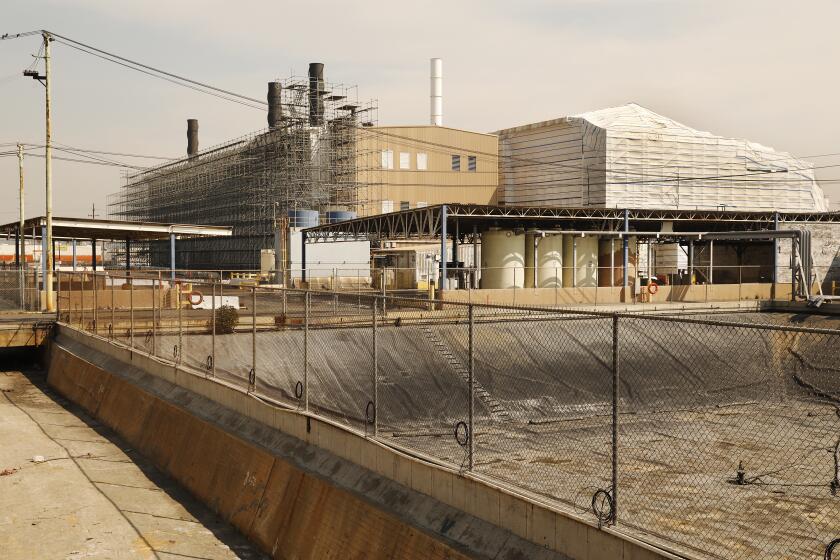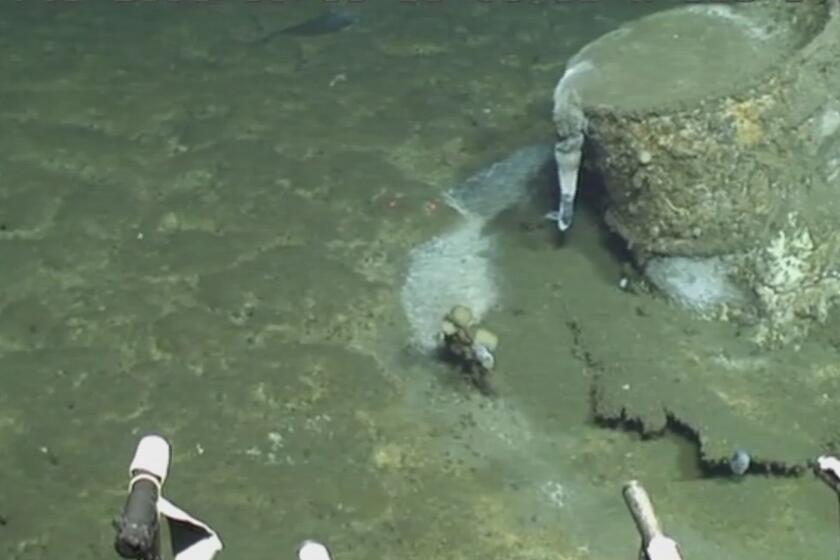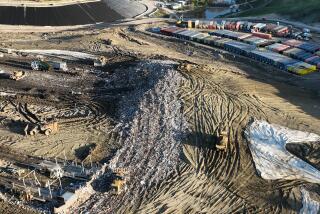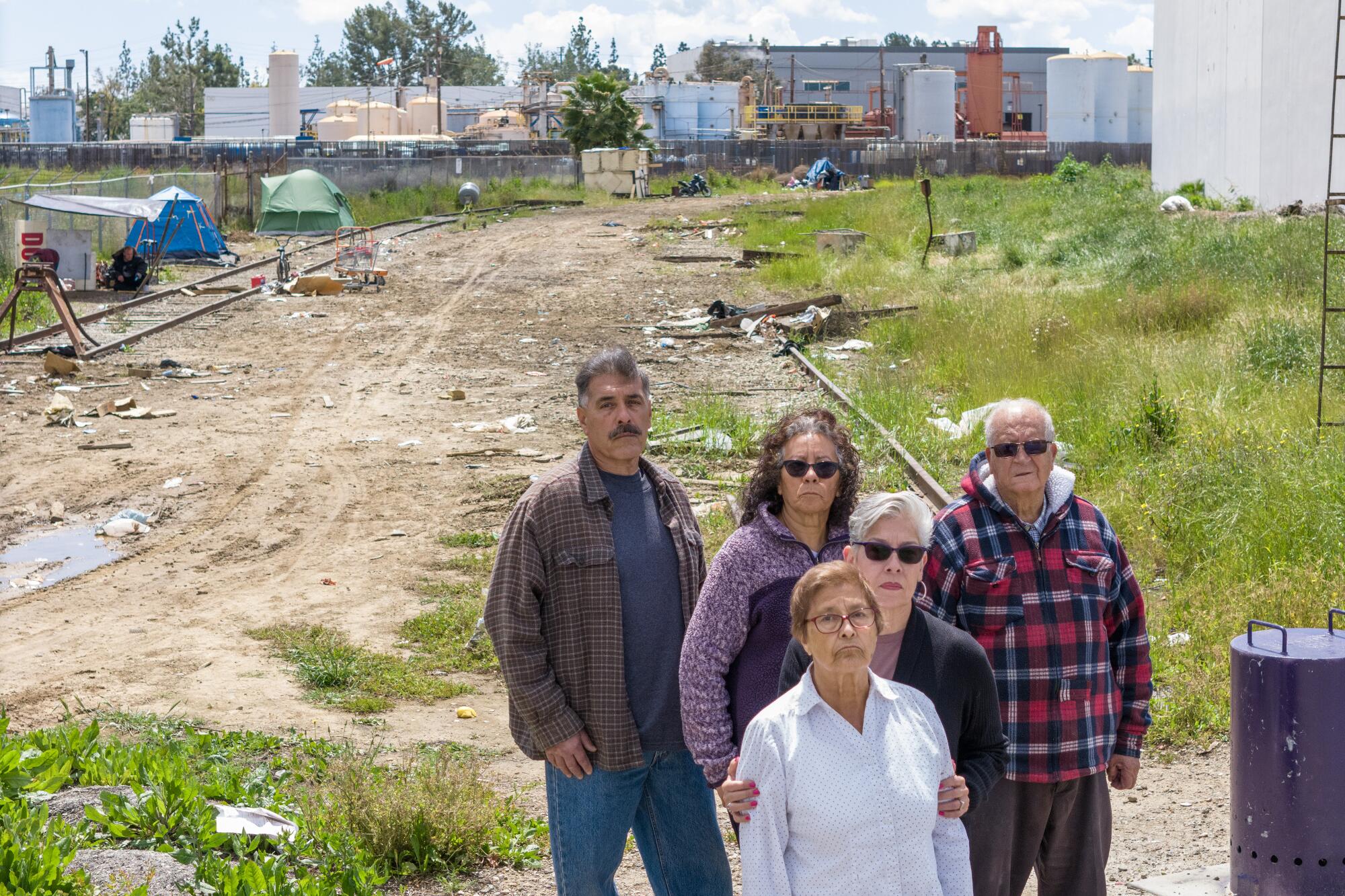
California regulators could soon grant a fresh permit for a hazardous waste treatment facility in Santa Fe Springs, even as they face off with the same company in court over alleged violations.
The upcoming decision has alarmed environmental and community groups, which argue the Department of Toxic Substances Control should turn down Phibro-Tech for a renewed permit after a history of violating state rules.
Aggressive and impactful reporting on climate change, the environment, health and science.
The Santa Fe Springs site is near the unincorporated area of Los Nietos, a largely Latino neighborhood in Los Angeles County that ranks among the most pollution-burdened communities in the state. The hazardous waste treatment facility is roughly 550 feet from the nearest homes, according to the state agency.
The Phibro-Tech facility had dozens of violations over the previous decade, according to a state analysis of its regulatory record. Last year, DTSC took the company to court, alleging that state inspectors checking the site before the COVID-19 pandemic had found leaking containers and other violations.
Yet months before suing the company, staff at the same agency told worried neighbors that they had tentatively decided to renew the permit for the Santa Fe Springs facility. Serious violations had dwindled in recent years, Department of Toxic Substances Control representatives said, and the facility did not pose a significant threat to the neighborhood.
State officials said they would make a final decision after weighing public comments.
But as it stands, “we have decided that based on all the information available — including their compliance history and their recent record of improving compliance — that it is appropriate to approve the permit,” supervising hazardous substances engineer Phil Blum said at a July meeting.
The Santa Fe Springs facility brings in hazardous waste and treats it to yield chemicals and metals like copper, which can then be used in electronics and other industries. Phibro-Tech said it “recycles waste that would otherwise need to be landfilled or injected into a deep well,” yielding copper without the harms of mining.
It has been operating on an expired permit since 1996 — longer than any other hazardous waste facility in California, according to a recent court filing by the company. Under California rules, such facilities can keep operating on an expired permit if they turned in an application on time for a new one.
The agency said that one reason the permitting process for Phibro-Tech had taken so many years was “to allow time for environmental sampling and technical assessments” that would inform its decision. In the meantime, DTSC said it had “continued to exercise its enforcement authority,” including by requiring cleanup of historic contamination.
A state review found that over a decade, the Santa Fe Springs facility had more than two dozen violations. Last year, the state rated its compliance history as the eighth worst among 74 hazardous waste facilities in the state, based on a scoring system that tracks violations.
Los Angeles County Supervisor Janice Hahn has publicly called for the facility to be shut down “until it can come into compliance with the law,” saying it poses too great a threat to the community.
DTSC “has a mandate to protect the public,” said Jaime Sanchez, a nearby resident and member of the local group Neighbors Against Phibro Tech. “But rather than protect the public, they have protected this industry ... at the expense of the health, safety and welfare of impacted communities.”
Publication of the information marks a new level of transparency from state officials, who have been harshly criticized for their oversight of cleanup work.
Phibro-Tech said that the state had rated its compliance as “conditionally acceptable,” with a score just over the cutoff for “acceptable.” It said its record had improved dramatically in recent years and that the objections raised by Hahn are “based on a misunderstanding of the plant and its current operations.”
DTSC officials told residents that the new permit would come with conditions to protect nearby communities, including maintaining gas detection sensors in critical areas.
“The big picture story here is that DTSC has reviewed the operations of the facility in great detail. We’ve required extensive changes to how the operations will be conducted under a new permit. And we believe that it demonstrates that the facility can be operated safely,” Blum said at a 2022 meeting.
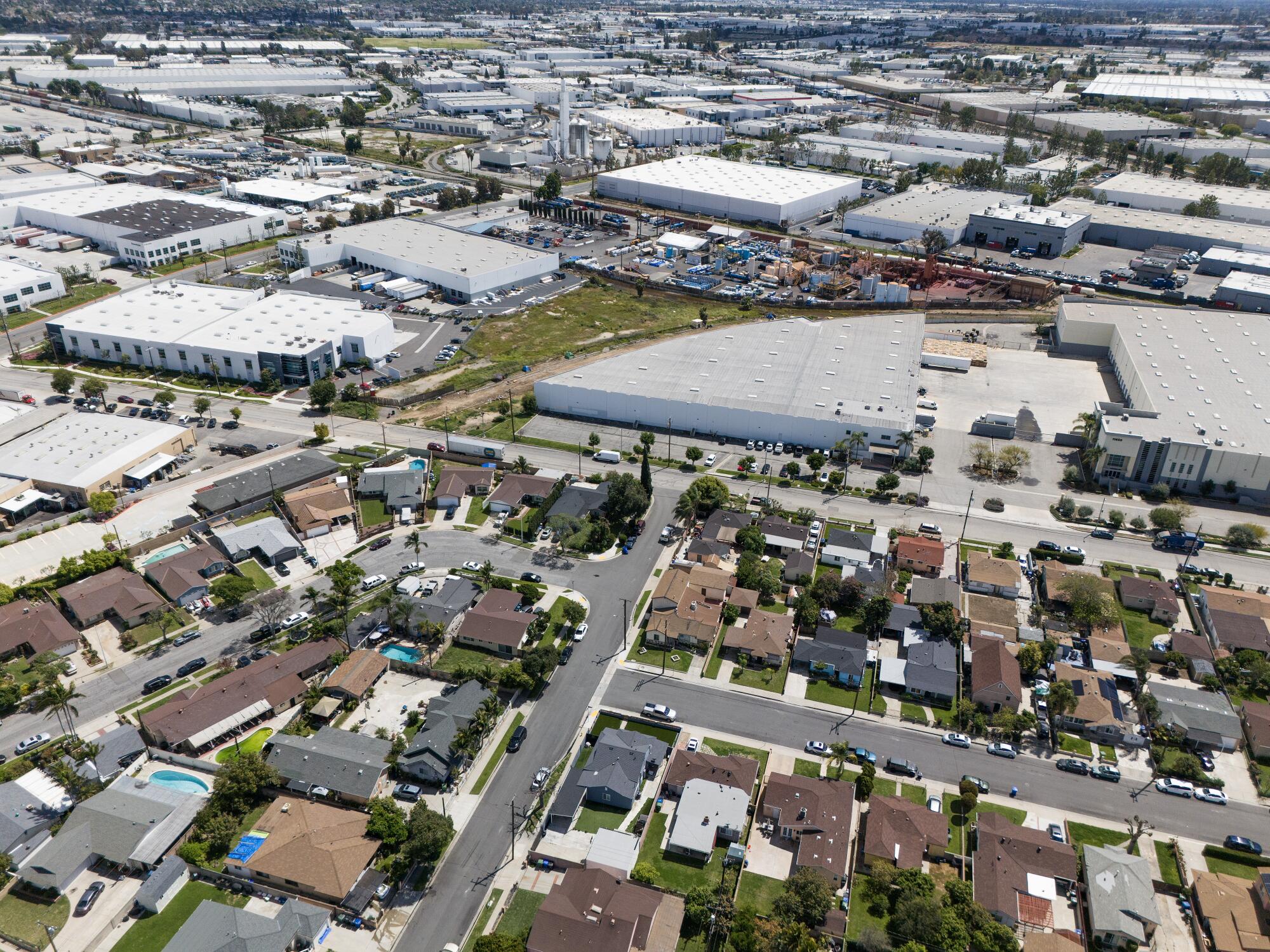
Byron Chan, a senior attorney with the environmental law nonprofit Earthjustice, argued that the agency should not give a new permit to “a facility that has shown that it’s not interested in complying.” He said it seemed like fines had become the “cost of doing business” for Phibro-Tech, calling it “an ongoing pattern of unaccountability.”
“You’ll see a pattern of violating the law, paying a penalty, and then violating the law again,” he said.
Five years ago, the agency announced that the company had to pay $495,000 in penalties for violations including storing hazardous waste outside of allowed areas. Earthjustice has also cited past incidents at the Santa Fe Springs facility in which ammonia and hydrochloric acid had been released at the site and workers had been burned with acid.
Phibro-Tech said in a statement that the chemical releases cited by the environmental group had not threatened the community and that it had adjusted operations to prevent them from recurring. “If a violation is found,” the company said, “we take immediate action to rectify it as quickly as possible.”
Scientists continue to unravel the startling history of all the toxic chemicals — and now radioactive waste — that have been dumped off the Los Angeles coast.
In its September lawsuit, DTSC alleged the company had broken the law by keeping hazardous waste in leaking containers, one of several violations found by inspectors visiting the facility in 2019.
It also faulted Phibro-Tech for failing to promptly dismantle a basin where hazardous waste had been processed in decades past. (The Center on Race, Poverty & the Environment, another group opposing a new permit for the facility, argued that failing to do that increases the risk of contaminants spreading.)
Phibro-Tech said many of the alleged violations had resulted from the agency shifting positions. The company said the decades-old permit no longer reflects how DTSC interprets when equipment is handling waste rather than “product,” and that the ambiguity had led to citations for “operating longstanding equipment.”
It also disputed state claims about leaking containers and the required timeline for closing the basin, which it said was now completed.
All in all, it said, the allegations “are not relevant to today.” DTSC, in turn, said that Phibro-Tech had “returned to compliance” for the violations alleged in the suit.
Chan said the state department appeared to be relying on “a false standard ... that if it was not complying with the law yesterday, but it’s in compliance today, then that’s OK.”
It’s “ignoring everything that’s happened in the past,” he said.
In a letter opposing a renewed permit, Earthjustice said the state agency had failed to do the proper level of environmental review for the decision. It also complained that the agency had not collected any information about pollution levels beyond the borders of the Phibro-Tech facility.
Neighbors have raised concerns about industrial contamination at the site, including with hexavalent chromium, the carcinogen perhaps best known as the target of famous activist Erin Brockovich.
“We want to live in a safe environment. ... We don’t want to be concerned about our health, safety and welfare [coming] at the expense of some company making profit,” resident Sanchez said.
Phibro-Tech said it had taken on responsibility for the contamination caused by a prior operator. DTSC officials said cleanup efforts by the company had brought hexavalent chromium in the soil at the site down to safe levels.
DTSC has not identified “significant health hazards from the operation of the facility,” Blum said last year.
In California, doctors trained as pediatricians, OB-GYNs and other specialties can take on lucrative — and potentially risky — cosmetic surgeries. Some have branched out with little or no surgical training.

